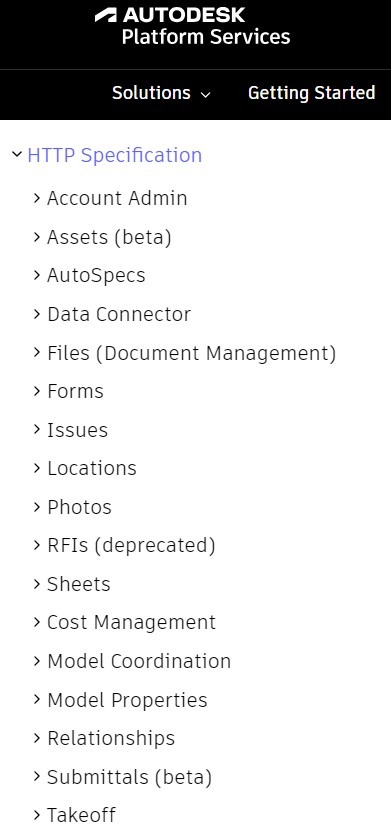Before you buy, check the API!
In the dynamic and fast-paced world of construction, where timelines are tight and precision is paramount, technology plays a pivotal role in streamlining processes. One often-overlooked aspect that holds immense significance is the Application Programming Interface (API) of construction solutions. APIs are not just integration tools; they serve as the backbone for automation functions, enabling proactive responses to critical events and potential delays.
Autodesk’s Platform Services (APS, formerly Forge) API, for instance, facilitates smooth data exchange between its various software products and other construction solutions, fostering a unified and efficient workflow.
Understanding the Significance of APIs in Construction
APIs serve as the bridge between different software systems, allowing seamless integration. For construction projects that rely on several tools for design, project management, and collaboration, a robust API ensures that these systems work cohesively.
-
Automation and Trigger Mechanisms
One of the most powerful features of APIs is their ability to automate tasks based on predefined triggers. In the construction industry, where time is of the essence, automation becomes a game-changer. Certain APIs enable the creation of triggers for critical events such as punchlists reaching a certain urgency level or identifying potential delays in the schedule due to specific late activities.
-
Real-time Communication
Construction projects are dynamic environments where real-time communication is essential. A good API facilitates the exchange of information in real-time, ensuring that all stakeholders are on the same page. This level of synchronization is invaluable for making informed decisions promptly and avoiding miscommunications that could lead to delays or errors.
We’ve encountered some solutions in the market that provide CSV output for data but lack the capability for real-time linking via API. In the realm of construction, relying on outdated data poses potential risks and challenges.
-
Customization and Scalability
Every construction project is unique, and the ability to customize software solutions to fit specific requirements is crucial. A good API provides a high degree of customization, allowing construction professionals to tailor the software to their project’s unique needs. This adaptability ensures that the software remains scalable, accommodating changes and expansions seamlessly throughout the project lifecycle.
We have seen many solutions in the market that have a take-it-or-leave-it approach, which for our industry is sometimes not practical or even feasible.
Three key things to avoid
1) Poor Documentation and Support
Documentation will tell you everything and you do not need to be a technical wizard to go through it!
Avoid software solutions that lack clear and well-documented APIs, as this can lead to challenges in implementation and ongoing maintenance. Insufficient documentation makes it difficult for developers to understand and leverage the API effectively. Additionally, ensure that the software vendor provides robust support for their API, including regular updates, a responsive support team, and a community or resources for developers. Inadequate support can hinder the resolution of issues and impact the overall reliability of the API in your construction workflows.
2) Limited Integration Capabilities
When selecting software for construction, avoid solutions with limited or restrictive integration capabilities. Ensure that the chosen software provides a robust API that allows seamless integration with other essential tools used in construction projects, such as project management software, design tools, and collaboration platforms. Limited integration can lead to siloed data and hinder the efficiency of project workflows.
3) Inadequate Automation Features
Steer clear of construction software that lacks comprehensive automation features through its API. Automation is crucial for streamlining repetitive tasks, setting triggers for critical events, and proactively addressing potential issues. An API with inadequate automation capabilities may result in manual interventions, slowing down processes and increasing the risk of errors or delays in project timelines.
Also, look out for rate limits and any quotas the software may have! Big projects need big limits.
Conclusion
In conclusion, the API of construction solutions plays a pivotal role in enhancing efficiency, collaboration, and decision-making in the construction industry. Its integration capabilities, automation features, real-time communication, customization options, and support for data analytics make it a critical component for successful project management.
As the construction industry continues to evolve, embracing and leveraging the power of APIs will be essential for staying competitive and ensuring the successful delivery of projects. By understanding and harnessing the capabilities of a solution’s API, construction professionals can unlock new levels of efficiency and effectiveness in their endeavours.
As a final word of advice from us at BlackSmithSoft: “Don’t buy without a (good) API!”

